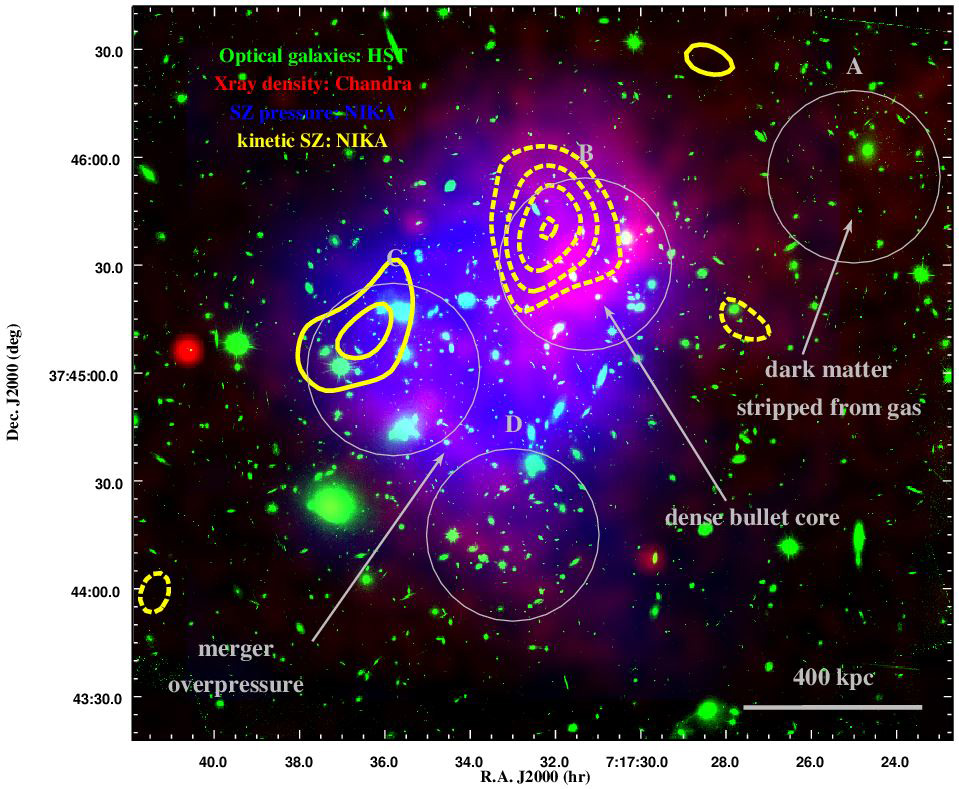A team of researchers from the NIKA consortium, led by Rémi Adam (Laboratoire Lagrange – OCA, UCA, LPSC Grenoble, CNES), Iacopo Bartalucci and Gabriel Pratt (CEA Saclay), has obtained for the first time an image of the velocity of the electron gas in a merging cluster of galaxies. These observations open a new way to study the formation of the largest structures in the Universe, formed through the most energetic events since the Big Bang.
The Universe in which we live has been shaped by the gravitational collapse of large-scale structures that started to form about 14 billion years ago, right after the Big Bang. Today, the largest gravitationally bound objects, which constitute the building blocks of our Universe, are the clusters of galaxies.
Despite their name, galaxy clusters are mainly composed of dark matter (~85%) and hot ionized gas (~12%), with only a few percent of the mass contained in galaxies. Cluster formation is driven by the gravitational collapse of the dark matter, the gas and galaxies “following” this process. During their assembly, clusters can collide at high velocity. These mergers are the most energetic events since the Big Bang and they are fundamental to understand the assembly of structures in the Universe.
One way to study the velocity of clusters is to measure the imprint of their motion in the Cosmic Microwave Background (CMB) radiation through use of the kinetic Sunyaev-Zel’dovich (kSZ) effect. This effect arises from the Doppler shift of CMB photons when they interact with fast-moving electrons in the intra-cluster gas. The kSZ effect is the only known way to directly measure the peculiar velocity of objects at cosmological distances, because unlike other methods, the CMB radiation provides an absolute reference for the measurement. While its thermal homologue (the thermal Sunyaev-Zel’dovich effect, tSZ) is now routinely used to measure the electron gas pressure in clusters, the kSZ effect remains very challenging to observe and only a handful of low significance detections have been obtained so far.

Fig 1. Multi-wavelength image of MACS J0717.5+3745 showing the galaxy distribution (green, Hubble Space Telescope data from Postman et al. 2012, ApJS, 199, 25), the electron gas density (red, Chandra X-ray data, ObsID4200), the pressure (blue, NIKA) and the kSZ signal (yellow contours, NIKA, figure below). The gray circles indicate the main subclusters. See: http://www.iram-institute.org/EN/news/2017/139.html
